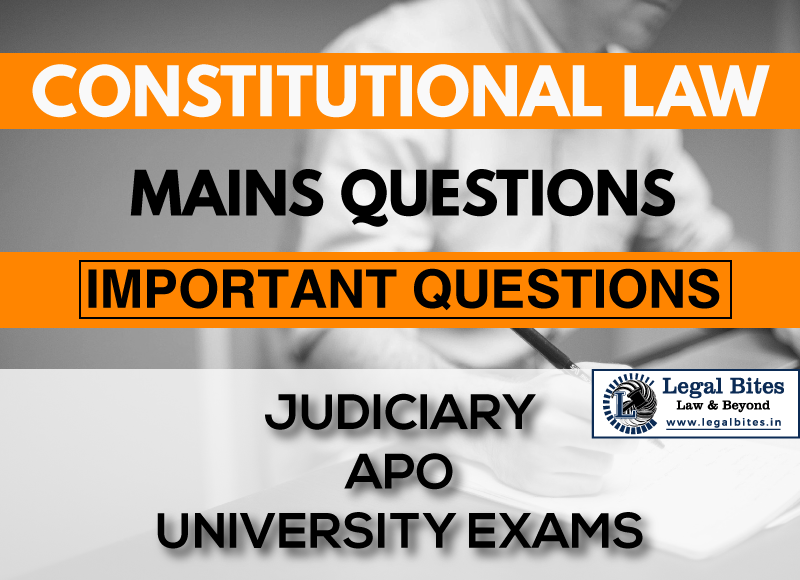What extend did the Government of India Act 1935 contribute to the present Constitution of India? Discuss, pointing out relevant provisions of each.
Find the answer to the mains question of Constitutional Law only on Legal Bites.

Question: What extend did the Government of India Act, 1935 contribute to the present Constitution of India? Discuss, pointing out relevant provisions of each. [BJS 1986] Find the answer to the mains question of Constitutional Law only on Legal Bites. [What extend did the Government of India Act 1935 contribute to the present Constitution of India? Discuss, pointing out relevant provisions of each] Answer The Government of India Act 1935, enacted on the recommendation of the...
Question: What extend did the Government of India Act, 1935 contribute to the present Constitution of India? Discuss, pointing out relevant provisions of each. [BJS 1986]
Find the answer to the mains question of Constitutional Law only on Legal Bites. [What extend did the Government of India Act 1935 contribute to the present Constitution of India? Discuss, pointing out relevant provisions of each]
Answer
The Government of India Act 1935, enacted on the recommendation of the Simon Commission and Round Table Conference provided provincial autonomy and centre within the dual form of government. Most of the features of the Government of India Act, 1935 have been borrowed into the constitution by our policymakers which influence it to great extent. Major provisions of the Indian Constitution which have been taken from the 1935 Act are:
- Federal Character of Government– Government of India Act 1935 provided for the establishment of provinces and princely states as units which is evident today as centers and states.
- Separation of power between Centre and units in terms of lists-(Federal list/Provincial list/Concurrent List) which today transformed into the three lists under the Seventh Schedule of Constitution.
- Introduction of responsible governments in provinces-Governor was required to act with the advice of ministers
- Adoption of diarchy at the centre-Division of federal subjects into reserved and transferred subjects which are presently applicable in the state of Delhi.
- Introduction of bicameralism– In 6 out of 11 provinces which include, Bihar, Bengal, Bombay, Madras, Assam, United Provinces which can be more or less presently seen to have adopted Bicameralism in these states.
- Principle of communal representation– Separate electorates for depressed classes (Scheduled castes), women, and labour (workers) as enshrined under the Government of India 1935 Act can be seen presently in the form of separate electorates for SCs and women.
- Extension of Franchise- The 1935 Act introduced 10 percent of the total population with voting rights and our constitution presently follows a Universal adult franchise.
- The establishment of the Federal Public Service Commission, Federal Courts, and Reserve Bank of India are a little bit changed by name or either continued.
- Parliamentary form of government was taken from this Act.
- Provincial autonomy had provided many regional leaders an opportunity to run a federal form of governance.
- The emergency provisions taken from the Constitution of Germany have influenced our constitutional form but the thought and understanding of it actually came from the Act, 1935.
Important Mains Questions Series for Judiciary, APO & University Exams
- Constitutional Law Mains Questions Series Part-I
- Constitutional Law Mains Questions Series Part-II
- Constitutional Law Mains Questions Series Part-III
- Constitutional Law Mains Questions Series Part-IV
- Constitutional Law Mains Questions Series Part-V
- Constitutional Law Mains Questions Series Part-VI
- Constitutional Law Mains Questions Series Part-VII
- Constitutional Law Mains Questions Series Part-VIII
- Constitutional Law Mains Questions Series Part-IX
- Constitutional Law Mains Questions Series Part-X
Admin Legal Bites
Legal Bites Study Materials correspond to what is taught in law schools and what is tested in competitive exams. It pledges to offer a competitive advantage, prepare for tests, and save a lot of money.
